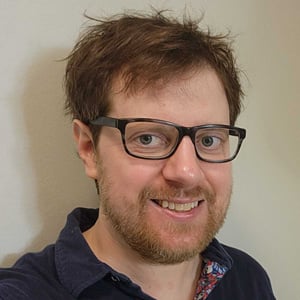St. Mark’s Anglican Church, Halifax is—you might say—stretching the range of its ministry and attracting wider community interest with a new prayerful yoga program.
“Stretch for Jesus” is the brainchild of the Rev. Tammy Hodge Orovec, who took over as incumbent at St. Mark’s last July. She proposed what the diocese of Nova Scotia and P.E.I. describes as a “faith and fitness ministry” in September. But the idea didn’t get up and running until November when Orovec—who is not a professional yoga teacher, but does yoga for her own health almost daily—suggested the idea at a Stir-up Sunday as a group of parishioners were discussing different ministry ideas.
“The yoga meditation one was one of the few that actually got a few folks from the church to sign up,” Orovec says. “It’s a very small congregation, mostly senior citizens, so they didn’t think that yoga would be a thing. But it turned out there was some interest.”
Orovec leads the prayerful yoga classes, which take place on Thursday evenings in the main church hall and are based around the lectio divina method of meditating upon Scripture. Rather than reading a lengthy Bible passage, practitioners of lectio divina will concentrate on a verse or two.
“Lots of the folks who come are used to yoga; they’re just not used to that reflective piece,” Orovec says. “I explain lectio divina is allowing a short message from Scripture to wash over you like you’re at the beach and waves on the beach—not to think about it too much, but just let the words wash over you and see what it brings to mind.”
Each participant is given a copy of the Bible passage to read while stretching, as the same passage is recited out loud. Participants can also take their copy home with them if they wish to continue reflecting on it throughout the week.
To make the class accessible to everyone, participants can modify the way they perform yoga. For example, older members of the congregation who have arthritis do chair yoga, while others do more physical stretching on the floor.
The breathing and stretching of yoga allows people to free tension in their muscles, Orovec says. “I think the passage is allowing us to do that with our minds as well … We talk about bringing in God or breathing in life and releasing anything that’s not life-giving … From a ministry standpoint, it allows me to experience what I’m offering not just as a ministry to the body, but a ministry to the soul.”
At the end of each class, everyone has an opportunity to share their reflections on the passage. Newer people might be reluctant to speak at first, Orovec says, but when someone speaks about an image or childhood memory that came to mind in association, others often follow. In some cases, she adds, classes have gotten into deep theological conversations.
“People who aren’t churched but who are coming will say, ‘I’m not religious, but this spirituality speaks to me,’” Orovec says. “They’ll talk very much about a God without putting a name to it … I think people generally are feeling welcomed and like they belong, even though they might not be members of the church.”
The number of people who attend the “Stretching for Jesus” prayerful yoga class is still relatively small, with nine people attending a recent class, Orovec says.
However, she says, two-thirds of those people are not members of the congregation. One outside participant has now begun attending church services regularly.
“With most programs in the church, to see two-thirds of the folks coming who aren’t affiliated with the church, that’s just rocking my socks off,” she says. “That’s a way better response from the wider community than I’ve experienced with other activities I’ve done.”
One person who came to the congregation through prayerful yoga is Kaiwith, who preferred not to give his last name.
“The main reason I became a regular at St Mark’s was the yoga program,” Kaiwith says. “It was a nice introductory event. Yoga is a very far-reaching activity both for the spiritually adventurous and the secularly cautious. It allows for neutral introduction [to spirituality], not to mention the general health aspect of it.
“I know far more 0-30-year-olds who would be more interested in going to a yoga studio than church service,” he adds. “The world has [been] shown yoga isn’t just an Eastern religious practice anymore—just a different way to pray.”
With “Stretching for Jesus” proving successful over the winter, Orovec hopes to move the classes outside during the summer months to make prayerful yoga more accessible to the broader community.
She says the experience has shown how new missional initiatives can get running without money or equipment and starting with a small number of people.
“If you have an idea, just give it a try,” Orovec says. “Put it out there and people will let you know whether it’s relevant or not … and [don’t] lose heart if you only get one or two people that are interested. That’s a seed and that’s all it takes to get something off the ground.





